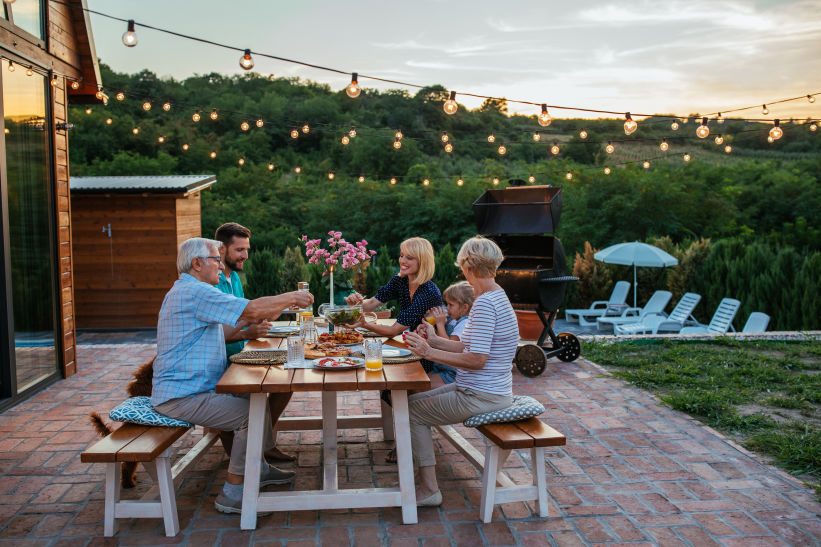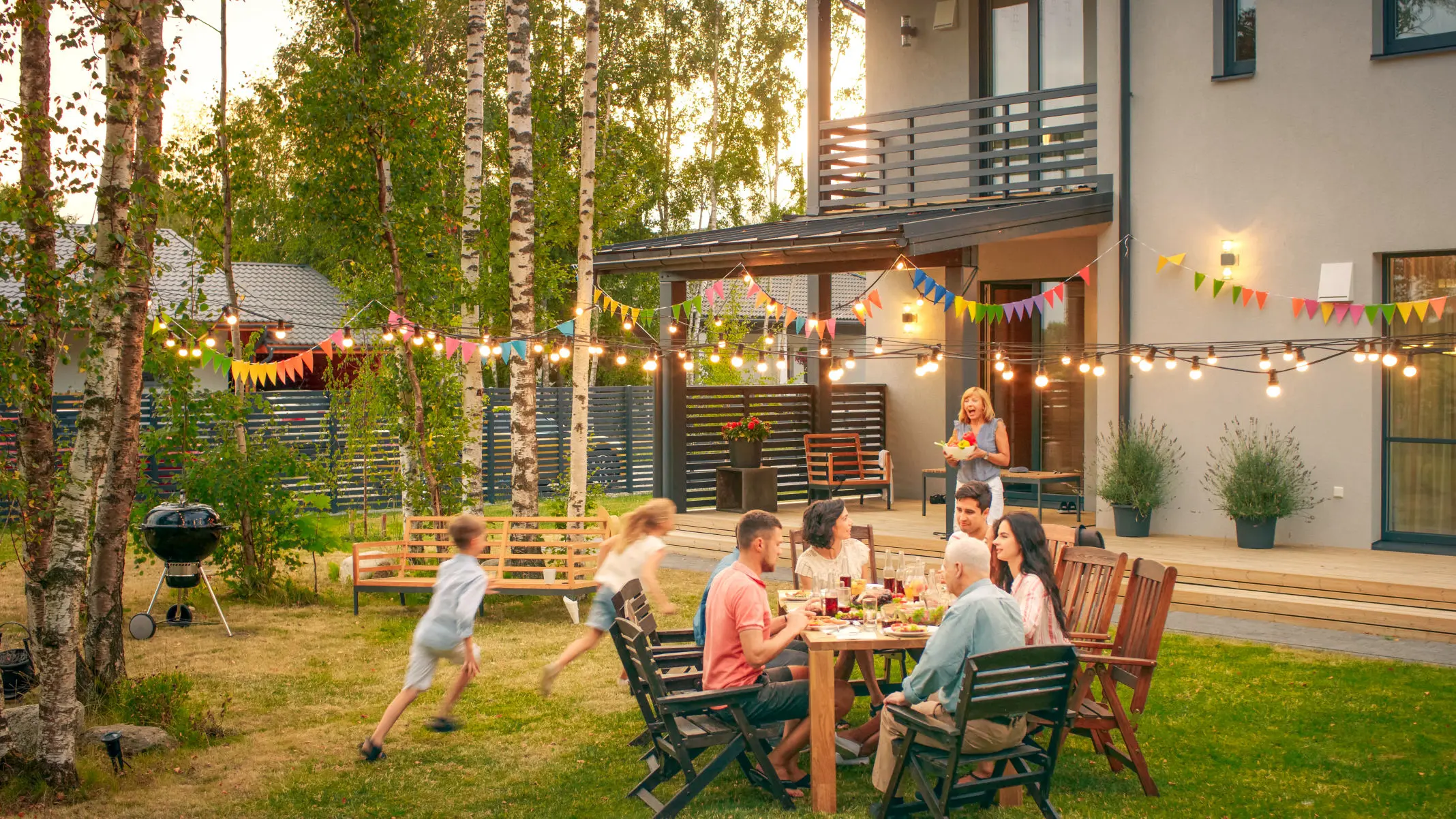


Imagine keeping an additional $50,000 to $100,000 in your pocket each year simply by choosing Temple over Houston, Dallas, or Austin. With a $400,000+ physician salary, that’s not an exaggeration—it’s the financial reality of living in Central Texas’s most underrated city. Temple’s cost of living sits 11–14% below the national average and dramatically below major Texas metros, instantly multiplying the value of your income. While Austin physicians watch 30–40% of their income vanish into housing, your Temple housing costs will consume just 15–20% of your monthly pay, boosting your ability to build real wealth rather than merely maintain a comfortable lifestyle.
This advantage isn’t just mathematical—it changes your daily lifestyle. Your morning coffee is $3.50 instead of $6, fine-dining dinners average $40 instead of $75+, and country club memberships cost hundreds, not thousands. Temple lets you live well without stress—your income becomes a tool for freedom, security, and unforgettable experiences, not a lifeline for survival.
Texas delivers one of the nation’s strongest financial benefits for physicians: zero state income tax. On a $400,000+ salary, that preserves an additional $20,000–40,000 in your pocket annually—money your colleagues in California, New York, and many other states will never see.
While Texas property taxes run around 1.47%, the savings still eclipse most states. A $400,000 Temple home—which would cost $800,000–$1.2M in Austin—results in property taxes of just ~$5,880 annually. Add the reasonable 8.25% sales tax and absence of estate or inheritance taxes, and your total tax burden remains remarkably low, especially compared to metro medical hubs where taxes stack in three layers—income, property, and sales.
With your $400,000+ income, Temple’s $228,916 median home price feels almost unreal. That’s barely more than half your annual salary—a ratio that would require double or triple the income in Austin or Dallas. Executive homes in premier neighborhoods run $400,000–$600,000, and buying land for a custom home is genuinely attainable, with build costs between $150–200/sq ft.
Your monthly payment for a $400,000 home totals approximately $2,500—only 7.5% of your monthly gross income. That’s true financial breathing room. Even if you prefer renting while settling in, high-quality rentals range from $1,500–$2,500, compared to $3,000–$5,000 in Houston or Austin. Meanwhile, Temple physicians routinely build wealth by investing in rental properties thanks to the high demand generated by Fort Cavazos families and the expanding medical community.
Groceries in Temple cost 6–7% below national averages, with a family of four spending about $1,200/month. Dining out becomes a genuine pleasure rather than a costly indulgence—excellent meals typically range $15–25 per person. Transportation remains refreshingly affordable, with 16-minute average commutes saving you both money and hours of life compared to the grueling travel times in Dallas or Houston.
Annual transportation costs—including luxury vehicles—average $11,124 without the tolls, parking costs, or gridlock typical of big-city life. Utilities average $150–200/month, and grocery, gas, and routine services all cost noticeably less than in metro areas.
To enjoy the same lifestyle you’ll have in Temple, your salary would need to be $470,000 in Austin, $440,000 in Houston, and even higher in Dallas. The same income stretches 17% further than Austin, 13% further than Houston, and 26% further than Dallas.
Temple gives your $400,000 income the purchasing power equivalent to $500,000+ in San Francisco, $480,000 in Boston, or $460,000 in Chicago. While physicians in these cities struggle with million-dollar mortgages and private school tuition approaching university pricing, you’ll be building wealth, funding education, and traveling internationally—without financial strain.
With Temple’s low living costs and your substantial physician salary, you’ll enjoy one of the strongest wealth-building environments in the country. Maxing out retirement accounts, funding $30,000/year in 529 plans, and maintaining robust emergency reserves all become easily achievable while still enjoying a premium lifestyle.
Real estate investment becomes uniquely powerful here—purchase rental homes for $150,000–$250,000 that generate $1,500–$2,000/month in rent. Many Temple physicians build portfolios of 5–10 properties, resulting in dependable passive income streams that secure early retirement and long-term stability.
In Temple, your physician income isn’t consumed by survival—it becomes a vehicle for freedom, impact, and choice. While metro colleagues remain chained to high expenses and golden-handcuff jobs, you’ll reach financial independence years earlier, enjoying a career driven by passion rather than necessity. Temple transforms a strong income into true prosperity—fueling the secure, balanced, and fulfilling life you’ve worked so hard to achieve.
Picture yourself driving through the tree-lined streets of Harker Heights or along the scenic bluffs overlooking Stillhouse Hollow Lake, knowing that with your $400,000+ physician income, you can afford the executive home that would cost double in Austin or Dallas. The 30-minute radius surrounding Killeen encompasses some of Central Texas’s most desirable communities—from Harker Heights’ new luxury developments to Belton’s historic charm, from Copperas Cove’s affordable family neighborhoods to western Temple’s established estates. With median home prices ranging from $248,000 in Killeen to $336,000 in Harker Heights, your income transforms from merely “comfortable” to genuinely wealth-building, allowing you to choose your home based on lifestyle instead of financial limits.
This extraordinary affordability means your housing costs will consume just 10–15% of your monthly income rather than the 30–40% burden faced by metropolitan physicians. While your peers in Austin struggle with $600,000+ mortgages for modest suburban homes, you’ll be choosing from custom estates on acreage, lakefront homes with private docks, or brand-new builds in master-planned communities—often with commutes as short as 10–15 minutes.
Harker Heights stands out as the premier community for physicians—offering a small-town feel paired with upscale amenities just minutes from Killeen’s medical centers. With a population of 33,000 and crime rates well below state and national averages, this rapidly growing suburb prioritizes safety, quality schools, and family-friendly neighborhoods. Its location along Highway 190 places you near your hospital while giving you peaceful separation from work—something many metropolitan physicians never achieve.
Most homes in Harker Heights were built after 2000, featuring open floorplans, energy-efficient designs, and luxury elements like granite counters and spa-quality primary suites. Gated neighborhoods such as Bella Charca offer homes from $465,000–$600,000+, while properties along The Ridge provide custom lakeview homes on large lots—similar views in Austin's lake communities would cost millions.
Killeen delivers unparalleled value for physicians focused on short commutes and maximum home-for-dollar. With median prices around $248,000, you could easily buy an investment property here while living in Harker Heights or Belton. Killeen’s diverse neighborhoods range from established downtown areas to new developments like Yowell Ranch, offering modern homes from $290,000–$400,000.
The steady demand created by Fort Cavazos ensures stable property values and strong rental markets, making Killeen an ideal choice for physicians pursuing rapid wealth accumulation or temporary housing during fellowship transitions.
Belton offers a unique blend of historic architecture, cultural richness, and modern amenities. Portions of western Belton fall within the 20–25 minute commute zone, giving access to Belton Lake, charming downtown shopping, and the cultural influence of the University of Mary Hardin-Baylor. The area offers homes from $250,000 character houses to $500,000+ lake-adjacent estates.
Belton ISD consistently earns high ratings, and the area’s parks, lake access, and nature centers make it ideal for physicians seeking community connection and high-quality recreation.
The 30-minute radius around Killeen gives your family access to top-performing public schools—eliminating the private-school expenses common in large metros. Killeen ISD serves over 44,000 students and earns a B rating, while Harker Heights schools like Richard E. Cavazos and Skipcha are high-performing standouts.
Belton ISD recently earned seven Purple Star designations for military support and invests heavily in new facilities. Temple ISD offers IB programs K–12 and has produced over 200 National Merit Scholars, giving students access to elite educational pathways.
The region is experiencing a construction surge, giving physicians the chance to buy semi-custom or fully custom homes without the astronomical prices of Dallas or Austin. Builders such as Omega, D.R. Horton, and KS Homes offer properties from 1,500 to 3,000+ sq ft starting in the mid-$200,000s, with premium lots and finishes available up to the $600,000s.
Build times average 6–9 months, and many builders provide physician-specific incentives, recognizing the stability and appeal of medical professionals as buyers.
With Fort Cavazos’s 35,000+ active-duty personnel and the booming medical sector, the region offers exceptional rental investment returns. Homes priced $150,000–$250,000 generate $1,500–$2,500/month in rent, with 8–12% annual returns.
Many physicians build portfolios of multiple rental properties, achieving long-term financial independence through passive income while relying on property management services for day-to-day operations.
The local real estate market is refreshingly calm, with Killeen scoring just 25/100 on competitiveness—giving you the luxury of time, negotiation power, and thoughtful decisions. Homes typically sit on the market for 60–70 days, allowing full inspections and contingencies.
Physician loan programs offer zero down, no PMI, and acceptance of future employment contracts—perfect for relocating physicians or residents. Local lenders and real estate professionals understand your unique scheduling and financial profile, making the process smooth and predictable.
Living within 30 minutes of Killeen as a physician doesn’t mean compromising—it means accessing better homes, safer neighborhoods, stronger schools, and accelerated wealth-building. Whether you choose Harker Heights’ luxury, Killeen’s unmatched value, or Belton’s charming community, you’re securing both an exceptional lifestyle and a powerful financial foundation for your family.



Picture yourself walking through Temple's tree-lined neighborhoods after an evening shift, feeling the same comfort and security you'd experience in any small Texas town—yet supported by the resources of a well-funded, fully staffed police department. With crime rates 9.5% below the national average and violent crime continuing to decline, Temple offers the kind of daily peace that allows you to focus on your medical practice and family without distraction. The city's northwest neighborhoods, where many physicians choose to live, consistently rank among the safest in the region, providing the quiet, suburban tranquility essential for unwinding after demanding hospital shifts.
Temple’s safety gains are no accident—they’re the result of focused investment and intentional policing. In 2024 alone, the city saw a 23% drop in non-fatal shootings, a 10% decrease in aggravated assaults, and a 29% reduction in robberies. By 2025, the police department reached full staffing for the first time in 4.5 years, allowing a shift from an eight-district to a ten-district patrol model. This increased coverage improves visibility, shortens response times, and strengthens community relationships—all contributors to the safety you’ll feel every day.
The neighborhoods most popular among physicians—West Temple, the communities surrounding Wildflower Country Club, and the western-edge developments—offer some of the city’s lowest crime rates. In Northwest Temple, your annual chance of encountering crime is approximately 1 in 65, dramatically safer than comparable communities in Houston, Dallas, or Austin. These statistics reflect all categories of crime, giving you an accurate, comprehensive picture of true neighborhood safety.
Regular patrols, strong neighborhood watch programs, and a proactive police force help ensure that parks, walking trails, and community spaces remain safe—not because problems are being addressed, but because they’re prevented. Your children can bike to friends’ homes, play outside until dusk, and walk to school confidently. This is the classic Texas upbringing many physicians want for their families but rarely find in metropolitan centers.
Baylor Scott & White Medical Center and the Temple Medical & Educational District (TMED) maintain exceptional safety standards designed specifically around the needs of healthcare workers. From monitored, well-lit parking structures to security escort services for late-night shifts, medical staff work in an environment engineered for confidence and protection. Unlike hospitals in metropolitan areas—where parking garages can be hotspots for break-ins or assaults—Temple’s medical district remains notably calm and secure.
Collaboration between hospital security and the Temple Police Department provides multiple layers of protection, including officers trained to support healthcare settings. Medical professionals also benefit from priority police response, reflecting the community’s deep respect for those providing lifesaving care. The absence of aggressive panhandling or widespread substance-related incidents near the medical district keeps the environment focused, supportive, and safe.
Temple’s police force exemplifies the positive potential of community policing. With 158 officers serving roughly 90,000 residents, the officer-to-resident ratio allows for personalized, relationship-driven policing. Officers are not anonymous enforcers—they know residents by name, understand neighborhood rhythms, and actively partner with the community to maintain safety.
Under Chief Shawn Reynolds’ leadership, the department has embraced transparency, publishing monthly crime statistics and hosting community meetings. The combination of modern technology—such as real-time crime analytics and predictive tools—and old-fashioned beat policing results in a highly responsive, effective public safety system.
Your daily commute in Temple is the opposite of big-city stress: well-maintained roads, predictable traffic patterns, and courteous drivers. The city’s traffic fatality rate sits below the Texas average, and most collisions are minor rather than the severe, high-speed incidents common in metro freeways. The absence of gang-related activity significantly reduces risks of aggressive driving, road rage, or vehicle-related crime.
With an average commute of just 16 minutes, you spend less time exposed to traffic hazards and more time with your family. School zones are carefully monitored, and the city’s grid-like layout provides multiple route options to avoid bottlenecks or construction. Emergency services also enjoy unimpeded access, improving outcomes for trauma cases and ensuring rapid response when needed.
Central Texas offers a geographically stable environment with fewer extreme weather threats than many areas of Texas. Temple sits outside the highest-risk zones of Tornado Alley and is far enough inland to avoid the devastation hurricanes bring to coastal regions. While flash flooding can occur, the city has invested in improved drainage systems and flood control infrastructure to protect residential neighborhoods.
Temple’s proximity to Fort Cavazos enhances disaster preparedness significantly. Military coordination brings robust emergency response capabilities, including logistics, medical support, and rapid mobilization during crises. Residents also benefit from comprehensive emergency alerts, active-shooter readiness protocols, and well-executed public health responses honed during the pandemic.
Temple and Belton ISDs prioritize student safety with measures that feel protective—not restrictive. Schools employ single-point entry systems, trained school resource officers, and multidisciplinary threat assessment teams that address issues early. The absence of major gang presence in area schools allows educators to focus on academics rather than crisis management.
Youth crime rates remain well below state averages thanks to extensive after-school programs and supportive community services. Organizations like the Ralph Wilson Youth Club and Boys & Girls Club provide structured activities and mentorship that keep students engaged and thriving.
Living in Temple with your $400,000+ physician income doesn’t mean hiding behind gates or investing in private security—it means experiencing daily life in a community where safety is built on trust, relationships, and shared values. While no city is entirely crime-free, Temple’s declining crime rates, fully staffed police force, secure medical district, and family-centered neighborhoods create an environment where you can truly focus on what matters: your practice, your family, and your well-being.
Temple offers the rare combination of genuine safety and genuine community. Neighbors know each other, children play freely, and families enjoy evening walks without fear. This is the Texas lifestyle you imagined—rooted in connection, reinforced by stability, and elevated by the peace of mind that comes naturally when a community works together to protect what’s most important.
